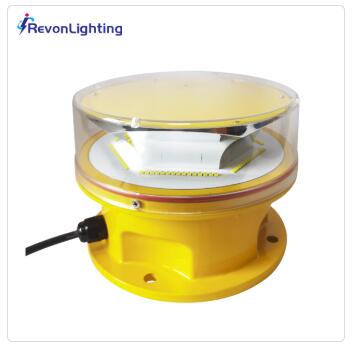Posted: 2025-01-03
From urban skylines to rural landscapes, towers stand as critical structures for communication, observation, and power transmission. Ensuring their visibility, especially during low-light conditions, is essential for aviation safety and overall operational integrity. OB lights in towers play a pivotal role in meeting these requirements, combining functionality and compliance to safeguard lives and assets.
What Are OB Lights in Towers?
OB lights, short for obstruction lights, are specialized lighting systems designed to make tall structures visible to aircraft and other vehicles. Positioned strategically on towers, these lights act as warning signals to prevent collisions. They are a crucial safety feature mandated by aviation authorities and are particularly vital for towers located near airports, busy air routes, or in densely populated areas.
Ensuring Safety and Compliance
The primary function of OB lights in towers is to enhance visibility and safety. By emitting bright, consistent light signals, these lights alert pilots to the presence of tall structures, reducing the risk of accidents. In some cases, they are equipped with flashing patterns or dual lighting modes—red for nighttime and white for daytime visibility—to ensure maximum effectiveness.
Regulatory compliance is another key aspect of using OB lights in towers. Aviation authorities such as the Federal Aviation Administration (FAA) and the International Civil Aviation Organization (ICAO) have established guidelines for the installation, brightness, and operational standards of obstruction lighting. Adhering to these regulations is not only a legal obligation but also a critical component of responsible tower management.

Advancements in OB Light Technology
Modern OB lights in towers leverage advancements in technology to deliver superior performance and efficiency. The shift from traditional incandescent bulbs to energy-efficient LEDs has revolutionized obstruction lighting. LED OB lights offer longer lifespans, lower energy consumption, and reduced maintenance costs, making them an ideal choice for tower operators.
Additionally, smart lighting systems are becoming increasingly popular. These systems allow remote monitoring and control of OB lights, enabling operators to detect malfunctions, adjust brightness levels, or schedule maintenance with ease. Some advanced models even incorporate solar power and battery backups, ensuring uninterrupted operation during power outages or in remote locations.
| OB Lights in Towers |
| OB Lights in Tower |
Applications Across Various Towers
OB lights are used in a wide array of tower types, each serving distinct purposes:
Telecommunication Towers: These towers support cellular networks, radio broadcasts, and internet connectivity. OB lights ensure their visibility in both urban and rural settings.
Transmission Towers: High-voltage transmission towers that carry electricity across vast distances require OB lights to signal their presence to low-flying aircraft.
Observation Towers: Found in national parks, urban areas, or tourist destinations, these towers benefit from OB lights to enhance nighttime visibility and safety.
Wind Turbine Towers: As wind energy becomes a significant part of renewable energy efforts, the tall turbines require OB lights to meet aviation safety standards.
Environmental Considerations
While OB lights in towers are crucial for safety, their environmental impact must also be considered. Excessive brightness or poorly designed systems can contribute to light pollution, disrupting nocturnal wildlife and affecting the natural night sky.
Manufacturers are addressing these concerns by designing lights with controlled intensities, shielded optics, and advanced dimming capabilities. These innovations ensure that OB lights fulfill their safety functions while minimizing their ecological footprint.
Economic and Operational Benefits
Investing in high-quality OB lights in towers offers several economic and operational advantages. LED-based systems, for instance, significantly reduce energy consumption and maintenance costs over their operational lifespan. Remote monitoring capabilities also streamline maintenance procedures, minimizing downtime and labor expenses.
Moreover, reliable OB lighting enhances the overall value of the tower infrastructure. By ensuring compliance with aviation safety standards and reducing the risk of incidents, these lights contribute to the long-term sustainability and profitability of tower operations.
Future Trends in OB Lighting
The future of OB lights in towers is shaped by continuous innovation and sustainability. Integration with the Internet of Things (IoT) is set to revolutionize obstruction lighting, enabling seamless connectivity and real-time data exchange. Smart OB lighting systems can interact with weather data, adjust illumination based on environmental conditions, and provide predictive maintenance alerts.
Furthermore, renewable energy integration will continue to grow. Solar-powered OB lights combined with efficient energy storage solutions will make these systems even more sustainable and reliable, particularly in remote or off-grid locations.
OB lights in towers are an indispensable component of modern infrastructure, ensuring safety, compliance, and operational efficiency. As technology advances and environmental considerations take center stage, these lighting systems are evolving to meet the needs of the future.
By adopting innovative and sustainable OB lighting solutions, tower operators can contribute to safer skies, reduce operational costs, and minimize their environmental impact. In doing so, they uphold the critical role of OB lights in shaping a secure and connected world.